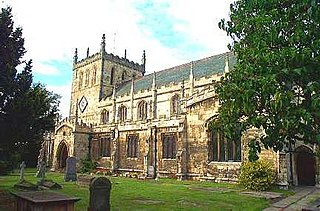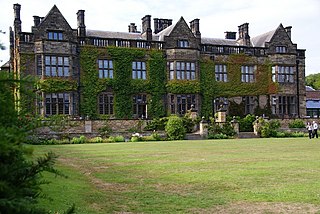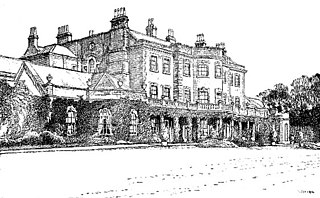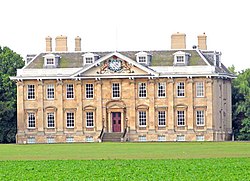
Bretton Hall is a country house in West Bretton near Wakefield, West Yorkshire, England. It housed Bretton Hall College from 1949 until 2001 and was a campus of the University of Leeds (2001–2007). It is a Grade II* listed building.

Viscount Downe is a title that has been created twice in the Peerage of Ireland. The first creation came in 1675 for William Ducie. However, the title became extinct on his death in 1679. The second creation came in 1680 for John Dawnay. He had earlier represented Yorkshire and Pontefract in the English House of Commons. His son, the second Viscount, also represented these constituencies in the House of Commons. His grandson, the third Viscount, sat as a Member of Parliament for Yorkshire but died from wounds received at the Battle of Campen in 1760. He was succeeded by his younger brother, the fourth Viscount, who represented Cirencester and Malton in Parliament.

Eaton Hall is the country house of the Duke of Westminster. It is 1 mile (2 km) south of the village of Eccleston, in Cheshire, England. The house is surrounded by its own formal gardens, parkland, farmland and woodland. The estate covers about 10,872 acres (4,400 ha).

Newton-on-Ouse is a village and civil parish in the Hambleton District of North Yorkshire, England, about 7 miles (11 km) north-west of York. It lies on the east bank of the River Ouse

Sessay is a small, linear village and civil parish in North Yorkshire, England. It is situated approximately 4 miles (6 km) south-east from Thirsk, and 2 miles (3 km) west from the A19 road close to the East Coast Main Line.

Snaith is a town in the East Riding of Yorkshire, England, approximately 6 miles (10 km) west of Goole on the A1041 at its junction with the A645. It is 1 mile (1.6 km) to the north of the M62 motorway, just south of the River Aire.

West Cowick is a village in the East Riding of Yorkshire, England, situated approximately 1 mile (1.6 km) south-east of Snaith. It is just to the south of the A1041 road and north of the M62 motorway. It was historically part of the West Riding of Yorkshire until 1974.

East Cowick is a village in the East Riding of Yorkshire, England, situated approximately 1.5 miles (2.4 km) east of Snaith. It lies on the A1041 road and just north of the M62 motorway. It was historically part of the West Riding of Yorkshire until 1974.

Beningbrough Hall is a large Georgian mansion near the village of Beningbrough, North Yorkshire, England, and overlooks the River Ouse.

Gisborough Hall is a 19th-century mansion house, now a hotel, at Guisborough, Redcar and Cleveland, England. It is a Grade II listed building.
William Henry Dawnay, 7th Viscount Downe was a British politician.

John Dawnay, 4th Viscount Downe, was a British peer and Whig politician.

John Dawnay, 1st Viscount Downe, known as Sir John Dawnay between 1660 and 1681, was an English politician who sat in the House of Commons between 1660 and 1690.

Henry Dawnay, 2nd Viscount Downe, styled The Honourable Henry Dawnay between 1681 and 1695, was an English Tory politician who sat in the English House of Commons between 1690 and 1707 and in the British House of Commons from 1708 to 1727.
The Honourable John Dawnay of Cowick Hall, Yorkshire was a British politician who sat in the House of Commons between 1713 and 1716.

Wykeham Abbey is a Grade II* listed country house in Wykeham, North Yorkshire, England. It has been the seat of the Viscounts Downe since the early 20th century.
Chorley is a market town in the borough of Chorley, Lancashire, England. The town itself is unparished, and this list contains the listed buildings in the unparished area. Outside the town are parished areas, and each of these has a separate list for its listed buildings. The unparished area contains 53 buildings that are recorded in the National Heritage List for England as designated listed buildings. Of these, one is listed at Grade I, the highest of the three grades, five are at Grade II*, the middle grade, and the others are at Grade II, the lowest grade.

The Church of St James is a Church of England parish church in Baldersby St James, North Yorkshire. This Victorian church is a grade I listed building, and was designed by William Butterfield.

Woodsome Hall is a 16th-century country house in the parish of Almondbury, near Huddersfield, West Yorkshire, England. It is now the clubhouse of Woodsome Hall Golf Club and a Grade I listed building.

Ampney Park is a 16th century manor house at Ampney Crucis, Gloucestershire, England. It is a Grade II listed building.

















